#Sorbus aucuparia
Text
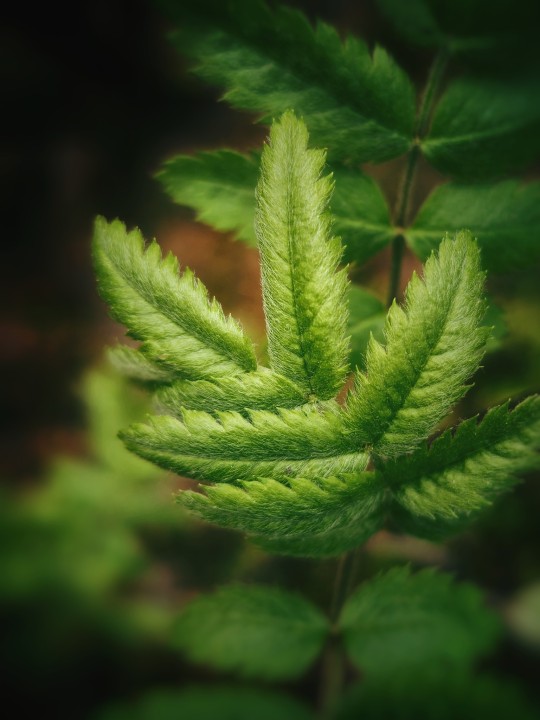
#photography#mine#nature#nature photography#original photographers#close up#macro#macro photography#green#forest#sorbus aucuparia#rowan#mountain ash#plants
8 notes
·
View notes
Text



Ֆʊʍʍɛʀɨֆʟɛ
- Ɦɛʀɮǟʀɨʊʍ : Sorbier des Oiseleurs (Sorbus Aucuparia)
- ʟǟքɨɖǟʀɨʊʍ : Lapis-Lazuli, Hypersthène, Iolite, Agate Mousse, Hématite
- ʟɨɛʊ ɖɛ Ƈʊɛɨʟʟɛȶȶɛ : forêt de la Planoise (Bourgogne) -
#the crypt and the incubus#witch jewelry#electroformed jewelry#botanical jewelry#collier#sorbus aucuparia#sorbier#lapis lazuli#hypersthene#iolite#agate mousse#hematite
3 notes
·
View notes
Text
The Power of the Flying Rowan Tree, Woe of the Witches | Ancient Origins
https://www.ancient-origins.net/myths-legends/woe-witches-elevated-flying-rowan-tree-004552

View On WordPress
#Beltane#Brahma#Druids#European Mountain Ash#Greek#Hebe#Hinduism#Lotus Flower#Norse#Oak Tree#Ohm#Rowan Tree#Rune Staves#Scotland#Sir James Frazer#Sorbus aucuparia#Sylvan Wonderer#The Golden Bough#Thor#Vishnu#Witch Tree#Witch Wood#Witchcraft#Witches
2 notes
·
View notes
Text
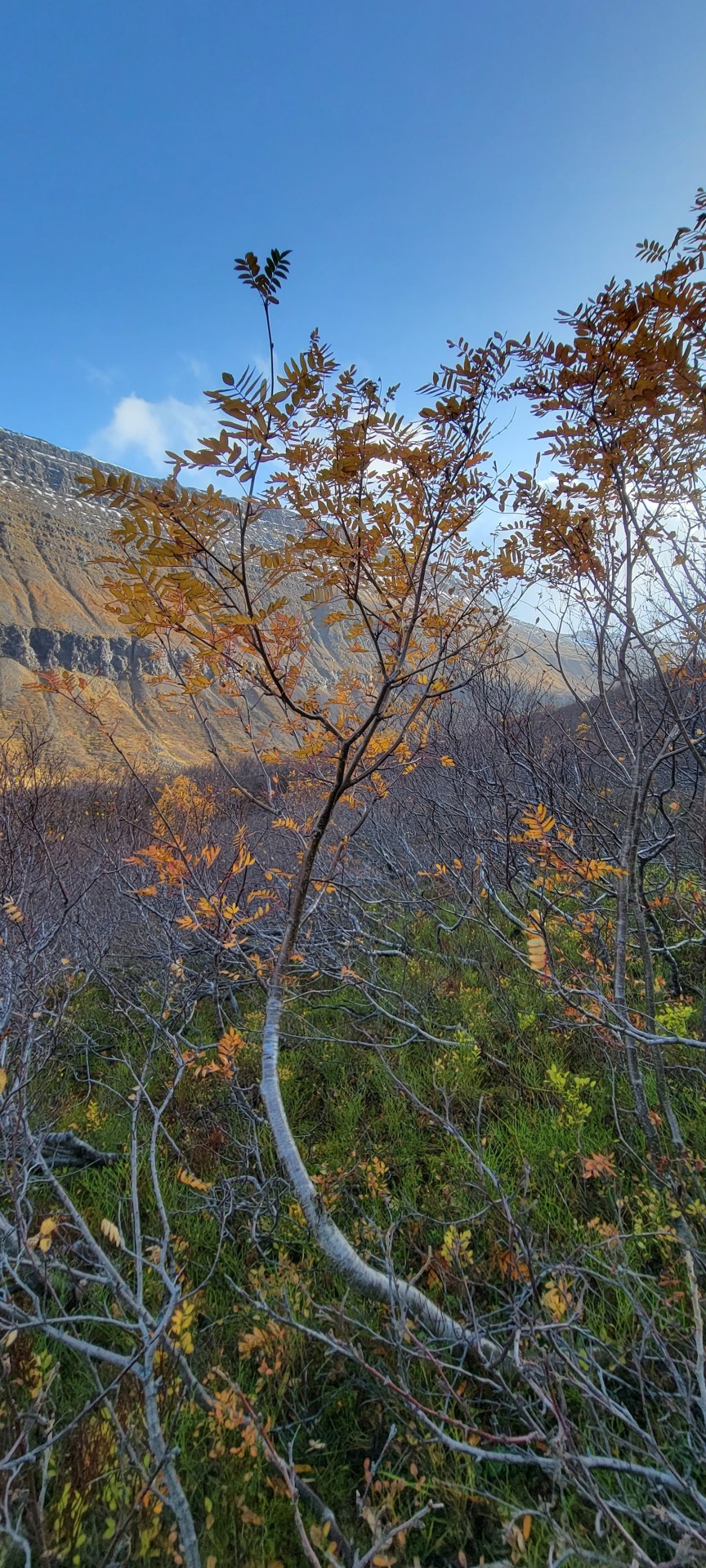
Sorbus aucuparia - European Rowan
Amoung the twisted thickets of dwarf birch and tea leaved willows, a uniquely tall tree exists in Iceland's native forest structures: The Rowan. If you've been watching my posts over the last few weeks you'll notice a tall yellow tree sticking out of the mountain slopes, that's our beautiful rowan. I've hiked the last few years searching for our state counterpart the "american mountain-ash" with barely any luck, however the appearance of the arctic northern european subspecies and american variety are very similiar. This is a subspecies of the well known Eurasian Counterparts, and given the harsh krummholtz conditions they rarely reach 8 feet in height nor develop significant mass (in the westfjords)
40 km South of the arctic, Rowan is often dwarfed and miniature occupying literal rock amoung the fjords sloped fell fields. Due to weather conditions my team was forced to wander through these forests, I was really stunned by the beauty of these trees up close, I'd never seen a rowan with quite this pattern of bark (which is typically smooth and plain) the lower trunks appeared almost birch like. Typically rowan is a pioneer species identified with berries present in winter, given the intense wind and active wildlife its unsurprising to see no fruits.
In older Nordic tales, Rowan is referred to as Thor's protection after a story in which he is saved by a branch while taken in a raging river current. Humorously enough I was using these trees as my protection climbing down 75 degree slopes. This photo was taken in Iceland's Westfjords, at around 300 meters in early October
6 notes
·
View notes
Text


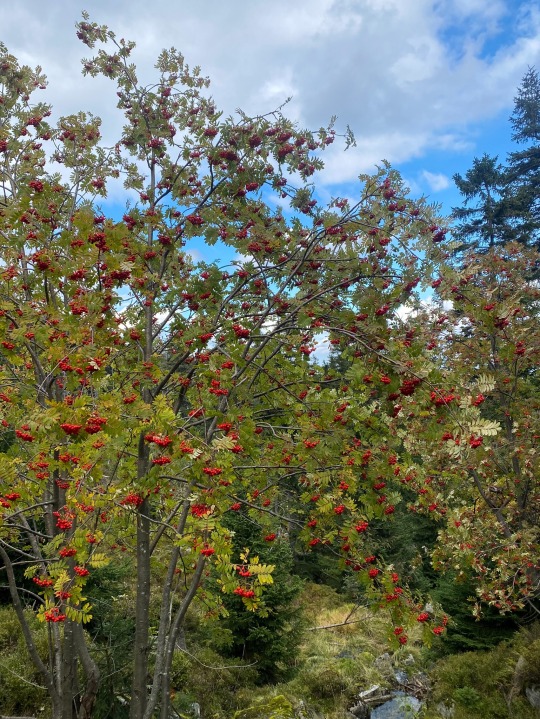
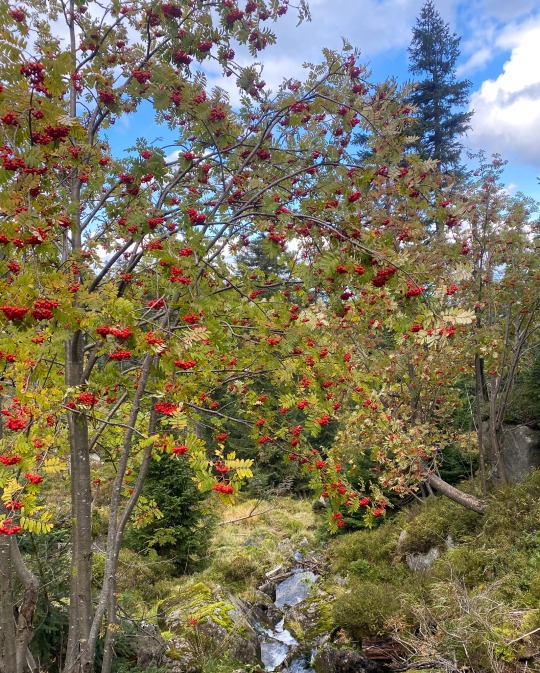
#Sorbus aucuparia#Rowan#rowan tree#mountain ash#tree#beautiful photos#beautiful#my photo#photography#photooftheday#naturecore#photoart#forest#woods#forest view#walking in nature#nature#goblincore#goblin aesthetic#goblin community#green energy#nature lover#goblin things#nature photography#walkingbarefoot
15 notes
·
View notes
Text
Language of Flowers: Mountain Ash
In the language of flowers, each flower has its day. Today, November 2, that flower is Mountain Ash, which signifies prudence.
Image above from Wikipedia.
Sorbus aucuparia, commonly called rowan and Mountain Ash, is a species of deciduous tree or shrub in the rose family having clusters of small white flowers and bright red berries. Russian botanist Ivan Vladimirovich Michurin began in 1905 to…

View On WordPress
#birthday#folk medicine#herb beer#herbalism#Ivan Vladimirovich Michurin#Language of flowers#Mountain Ash#october#Rowan#Sorbus aucuparia
0 notes
Text
Kuş Üvezi
Kuş Üvezi
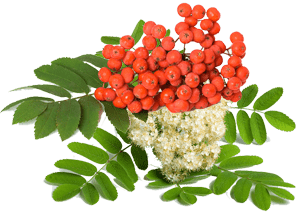
#CVitamini, #DoğalHabitat, #DoğalYaşam, #EkosistemDestekçisi, #KuşPopülasyonları, #KuşÜvezi, #KuşÜvezisiAğacı, #KuşÜvezisiBesinKaynağı, #KuşÜvezisiBitkisi, #KuşÜvezisiEstetik, #KuşÜvezisiHabitatı, #KuşÜvezisiKökSistemi, #KuşÜvezisiMeyveleri, #KuşÜvezisiReçeli, #KuşÜvezisiŞurubu, #KuşÜvezisiYuvaları, #PeyzajTasarımı, #SorbusAucuparia, #SorbusAucupariaKullanımı, #ToprakErozyonuÖnleme, #ToprakKoruma https://is.gd/Uon3a3 https://www.tibbivearomatikbitkiler.com/bitkiler/kus-uvezi/
Kuş üvezi (Sorbus aucuparia), gül ailesine (Rosaceae) ait bir ağaç türüdür. Bu ağaç, özellikle ılıman bölgelerde ve yüksek dağlarda bulunur. 12 – 15 metreye kadar yükselebilen bir ağaç olarak büyüyebilir ve oldukça dekoratif bir görünüme sahiptir. Karakteristik özelliklerinden biri, yaz aylarında beyaz çiçeklerle kaplanan büyük şemsiye benzeri çiçek salkımlarının olmasıdır. Bu çiçekler daha sonra parlak kırmızı veya turuncu renkte meyvelere dönüşürler. Bu meyveler, özellikle kuşlar tarafından çokça tüketilen ve dağıtılan, küçük, yuvarlak meyvelerdir.
Doğal yaşam alanlarının restorasyonunda ve peyzaj düzenlemelerinde yaygın olarak kullanılan bir bitki türüdür. Ayrıca meyveleri, reçel yapımında veya çeşitli yemeklerde kullanılabilir. Ağaçları ayrıca ahşap üretimi için de değerli ve bahçelerde, parklarda ve ormanlarda sıkça karşılaşılan ve sevilen bitkilerdir.. Bu bitki türü, dayanıklılığı, estetik görünümü ve kuşlar için sunduğu besin kaynakları nedeniyle doğal yaşamda ve insan etkileşimli ortamlarda önemli bir rol oynamaktadır.
Budama: Budama gerektirmez
Zararlılar: Yaprak bitlerine , kabarcıklı akarlara, pullu böceklere , sera kırmızı örümcek akarına ve testere sineklerine karşı duyarlı olabilir
Hastalıklar: Ateş yanıklığına , elma kanserine , gümüş yaprağına ve bal mantarına karşı duyarlı olabilir
Kuş Üvezi’nin Faydaları
Meyveleri hem insanlar hem de vahşi yaşam için büyük bir çekiciliğe sahiptir. Bu meyveler, yüksek miktarda C vitamini içerir ve genellikle kış aylarında kuşlar için önemli bir besin kaynağıdır. Ayrıca bu meyvelerden yapılan reçeller ve şuruplar da oldukça lezzetlidir. Ağaçları, doğal yaşam alanlarını desteklemekte önemli bir rol oynarlar. Kuşlar, bu ağaçların meyvelerini yemekle kalmaz, aynı zamanda ağaçların dallarında yuvalar kurarak ürerler. Bu nedenle kuş popülasyonlarının sürdürülebilirliği için önemli bir habitat sağlar.
İdrar söktürücü: İdrar söktürücü etkisiyle vücuttan fazla sıvı ve toksinlerin atılmasına yardımcı olur. Bu sayede böbrek taşı ve idrar yolu enfeksiyonlarının tedavisinde etkilidir.
Ateş düşürücü: Ateş düşürücü etkisiyle soğuk algınlığı ve grip gibi rahatsızlıkların neden olduğu yüksek ateşi düşürmeye yardımcı olur.
Antioksidan: Antioksidan içeriğiyle hücreleri serbest radikallerin zararlarından korur. Bu sayede kanser, kalp hastalığı ve Alzheimer gibi kronik hastalıkların riskini azaltmaya yardımcı olur.
Ayrıca bu ağaç türü, toprak erozyonunu önlemeye yardımcı olabilir. Kökleri, toprak kaymalarını ve erozyonu engellemeye yardımcı olan güçlü bir kök sistemine sahiptir. Bu özellik, Kuş üvezi ağaçlarını rüzgarlı veya eğimli bölgelerde toprak koruma amacıyla popüler hale getirir.
Kullanım Alanları
Halk hekimliğinde: Kuş üvezi, halk hekimliğinde soğuk algınlığı, grip, böbrek taşı ve idrar yolu enfeksiyonlarının tedavisinde yaygın olarak kullanılır.
Modern tıpta: Kuş üvezi, modern tıpta da bazı rahatsızlıkların tedavisinde kullanılmaktadır. Örneğin, kuş üvezi ekstresi, kanser hücrelerinin büyümesini yavaşlatmaya yardımcı olduğu gösterilmiştir.
Peyzajda Kullanım : Öncü bitki olarak kullanılabilir. Park, Bahçe, Yol ağacı
Geleneksel Kullanım : Kabukları, tabaklamada ve kumaş boyamada kullanılır.
Gıda Olarak Kullanım : Meyveleri yenir ve alkollü içki yapımında kullanılır.
Kuş Üvezi Nasıl Kullanılır?
Kuş üvezinin meyveleri ve yaprakları tıbbi amaçla kullanılabilir.
Meyveleri: Meyveleri taze olarak yenebilir veya kurutularak çay olarak hazırlanabilir.
Yaprakları: Yaprakları çay olarak hazırlanabilir veya kaynatılarak gargara olarak kullanılabilir.
Yan Etkileri
Genellikle güvenli bir bitki olarak kabul edilir. Ancak, yüksek dozlarda tüketildiğinde mide bulantısı, kusma ve ishal gibi yan etkilere neden olabilir. Ayrıca, hamile ve emziren kadınlar ile böbrek hastalığı olan kişilerin kuş üvezi kullanmadan önce doktorlarına danışmaları önerilir.
Herhangi bir bitkisel ürünü kullanmadan önce mutlaka doktorunuza danışmanız tavsiye edilir.
#C Vitamini#Doğal Habitat#doğal yaşam#Ekosistem Destekçisi#Kuş Popülasyonları#Kuş Üvezi#Kuş Üvezisi Ağacı#Kuş Üvezisi Besin Kaynağı#Kuş Üvezisi Bitkisi#Kuş Üvezisi Estetik#Kuş Üvezisi Habitatı#Kuş Üvezisi Kök Sistemi#Kuş Üvezisi Meyveleri#Kuş Üvezisi Reçeli#Kuş Üvezisi Şurubu#Kuş Üvezisi Yuvaları#Peyzaj Tasarımı#Sorbus aucuparia#Sorbus aucuparia Kullanımı#Toprak Erozyonu Önleme#Toprak Koruma
0 notes
Text
El Ayuntamiento y SIGAUS reforestan con 1.000 nuevos árboles la zona de La Vega

View On WordPress
#alcornoques (Quercus suber)#arces campestres (Acer campestre)#Ayuntamiento de Guadarrama#encinas (Quercus ilex)#espacio verde#La Vega#nogal común (Juglans regia)#olmos (Ulmus resista)#pinos piñoneros (Pinus pinea)#robles melojos (Quercus pyrenaica)#serbales de cazadores (Sorbus aucuparia)#SIGAUS#Sistema de Gestión de Aceites Industriales Usados en España
0 notes
Text

0 notes
Text

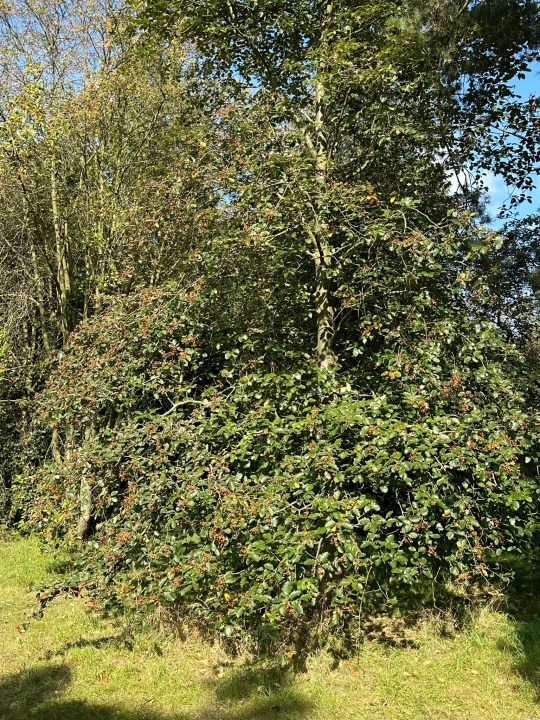

Plant of the Day
Monday 30 October 2023
The berries of Scandosorbus intermedia (Sorbus intermedia, Swedish whitebeam) are popular as a winter food supply for birds and the flowers provide pollen and nectar for insects. This small deciduous tree is tolerant of air pollution and will grow in exposed and coastal sites. The tree is a triple hybrid from the Sorbus aucuparia (European mountain ash), Sorbus torminalis (wild service tree) and Sorbus aria (whitebeam).
Jill Raggett
#Scandosorbus#sorbus#Swedish whitebeam#deciduous#small trees#tree#arboriculture#fruit#plants#horticulture#gardens#garden#cambridge
87 notes
·
View notes
Text
Moth of the Week
Red-Belted Clearwing
Synanthedon myopaeformis
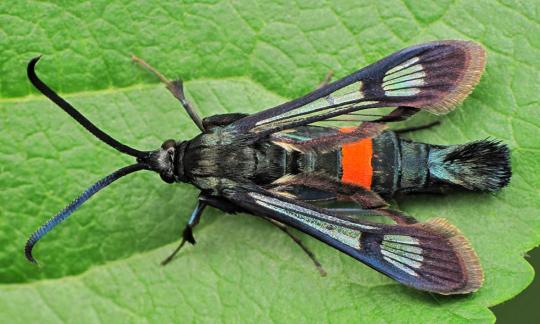
Image Source
The red-belted clearwing is a part of the family Sesiidae. It was first described in 1789 by Moritz Balthasar Borkhausen as Sphinx myopaeformis. This was later changed to Synanthedon myopaeformis. This moth is called the red-belted clearwing in Europe, the apple clearwing moth in North America, and the apple borer. This is due to their tendency to damage their host apple trees. It is considered a pest in Europe.
They may be confused with the large red-belted clearwing and the red-tipped clearwing.
Description This moth has a thin, dark blue, segmented body. The body is hairless aside from a bushy tail at the end of the abdomen. They are noticeable due to a bright red-orange band on one of the segments of the abdomen. The wings are clear with a dark outline and veins and a fringe on the outer margin (outer edge). The wings help distinguish the red-belted clearwing from the large red-belted and red-tipped clearwings as the wings have no red-orange markings.
Wingspan Range: 1.8 - 2.8 cm (≈0.71 - 1.1 in)
Diet and Habitat This species eats mainly apple, specifically Crab Apple (Malus sylvestris), as well as Pear (Pryus communis), Hawthorn (Crateagus monogyna), Almond (Prunus dulcis), Rowan (Sorbus aucuparia), apricots, cherries, mountain ash, peaches, plums, and quince. In Canada, adult moths have been attracted to the flowers of the snowy milkweed.
They can be found natively in Europe, North Africa, and Asia Minor. This species was noticed to North America and first detected in Canada in 2005. They inhabit well established orchards and gardens, hedgerows, open woodland, and mature scrub.
Mating Adults emerge from their cocoons in early summer and on flight from May to August, this is presumably their mating season. Females can lay up to 250 eggs, usually singly in the cracks or damaged areas of the trunk and branches they are hosting in. Females attract males with pheromones released from glands. A 2010 study found that 3,13-octadecadienyl acetate is the primary sex hormone.
Predators The larvae of this moth are preyed on by parasites, fungi, and bacteria. The main parasite of red-belted clearwing larvae is Liotryphan crassiseta. Other parasites are Nematodes, Steinernema sp. The fungi Beauveria bassiana and Metarhizium brunneum are common causes of death in larvae as well as the bacteria Bacillus thuringiensis.
Fun Fact
The adult red-belted clearwings are significantly less active on cold days compared to warm days.
In 2014, Judd and Eby found that S. myopaeformis does not discriminate between yellow, green and white or between purple, blue, red, and black. This suggests that they are dichromatic, meaning they can perceive mainly two colors. This affected traps set to catch this species as they acted differently depending on the light reflected.
As this species is considered a pest to apple trees, people have attempted to control the population. This has been tried with pheromone/mating disruption, pheromone laced traps, other chemical traps, the use of predators/enemies, and the covering of apple tree trunks in oil.
(Source: Wikipedia [1][2][3], Butterfly Conservation, Michigan State University)
#libraryofmoths#animals#bugs#facts#insects#moth#lepidoptera#mothoftheweek#sesiidae#red-belted clearwing#Synanthedon myopaeformis#apple clearwing#apple borer#very late post#sorry for the absence
46 notes
·
View notes
Text

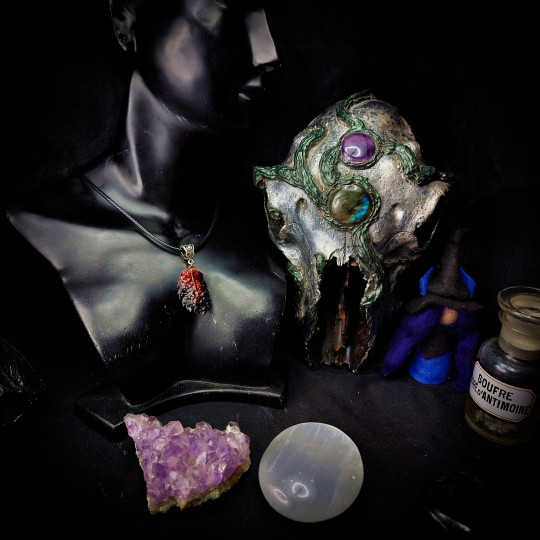
Ֆօʀɮʊֆ Ǟʊƈʊքǟʀɨǟ ƲƗ
- Ɦɛʀɮǟʀɨʊʍ : Sorbier des Oiseleurs (Sorbus Aucuparia)
- ʟɨɛʊ ɖɛ Ƈʊɛɨʟʟɛȶȶɛ : forêt de la Planoise (Bourgogne) -
#the crypt and the incubus#witch jewelry#electroformed jewelry#botanical jewelry#pendentif#sorbus aucuparia#sorbier des oiseleurs
1 note
·
View note
Text
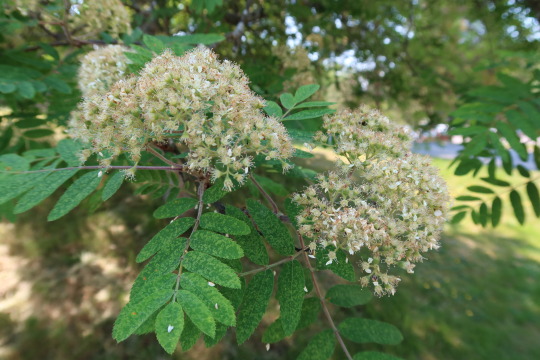
Sorbus aucuparia — rowan a.k.a. mountain-ash
12 notes
·
View notes
Note
what would rowan be in clanmew?
Rowan in Clanmew is Mabrre!
The species in question is Sorbus aucuparia! It's also called the Quickbeam or Mountain Ash in England, which are very descriptive names. It really loves higher altitudes where other plants don't survive, and grows very fast. In spite of how heavily associated it is with ShadowClan, it would have a pretty hard time growing there!
But there's a reason why it's seen as a ShadowClan tree; they are the only Clan who's figured out how to work with their berries. See, rowanberries are nasty. SUPER bitter, toxic when unripe, one of the favorite food of birds and that's about it. This is because they contain parasorbic acid.
But crafty ShadowClan has realized that when frozen, the berries remain tart, but not overly sour. They can also be fermented to create an alcohol.
22 notes
·
View notes
Text
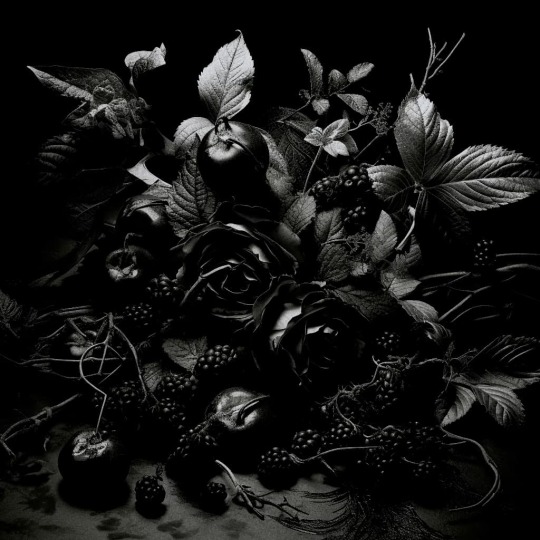
ℐ𝓃𝓉𝓇𝑜𝒹𝓊𝒸𝓉𝒾𝑜𝓃 𝒯𝑜 𝒮𝒽𝒶𝒹𝑜𝓌 𝒲𝒾𝓉𝒸𝒽𝒸𝓇𝒶𝒻𝓉 ℬ𝑜𝓉𝒶𝓃𝒾𝒸𝓈
A Gᴜɪᴅᴇ Tᴏ Usᴇғᴜʟʟ Hᴇʀʙs ﹠ Fʟᴏᴡᴇʀs.
Shadow witchcraft, like many other forms of witchcraft and magical traditions, incorporates a deep reverence for the natural world and the power of herbs in its practices. Within the shadow witchcraft tradition, certain herbs are considered sacred and hold a special place in rituals, spellwork, and healing. These herbs are chosen for their unique properties, both physical and metaphysical, and are often used to enhance the practitioner's connection to the shadows, the spirit world, and the unseen forces that permeate our reality.
Mugwort (Artemisia vulgaris): One of the most iconic herbs in shadow witchcraft, mugwort is revered for its ability to enhance psychic abilities and facilitate astral projection. It is believed to provide clarity in dreams and aid in connecting with the spirit world.
Belladonna (Atropa belladonna): Belladonna is a potent and highly toxic herb often associated with the darker aspects of shadow witchcraft. It is used cautiously, as it can induce altered states of consciousness and enhance divination, but it must be used with extreme care due to its deadly nature.
Mandrake (Mandragora officinarum): Mandrake is a legendary herb that holds a prominent place in shadow witchcraft due to its associations with powerful magic and the ability to summon spirits. It is considered a protector of the practitioner.
Wormwood (Artemisia absinthium): Wormwood is an herb that has been traditionally used in shadow witchcraft for its protective properties, as well as its association with absinthe, a spirit that has inspired many artists and writers.
Datura (Datura stramonium): Datura, also known as "thorn apple," is another highly potent and toxic herb. It is associated with shamanic journeying, but extreme caution is necessary when working with it due to its dangerous properties.
Henbane (Hyoscyamus niger): Henbane is used in shadow witchcraft for its ability to induce trance states and facilitate communication with spirits. Like belladonna and datura, it is a toxic plant and must be used with care.
Wolfsbane (Aconitum napellus): Wolfsbane, also known as aconite, is associated with protection and transformation in shadow witchcraft. It is believed to ward off malevolent entities and is used in rituals that involve shape-shifting.
Nightshade (Solanaceae spp.): Nightshades encompass various plants, including belladonna, datura, and mandrake, all of which have their unique uses in shadow witchcraft. They are linked to altered states of consciousness and spirit communication.
Hemlock (Conium maculatum): Hemlock, another toxic plant, is associated with necromancy and the summoning of spirits. It is used with extreme caution in rituals and spellwork.
Yew (Taxus baccata): Yew is considered sacred in shadow witchcraft due to its association with death and rebirth. It is often used to honor ancestors and connect with the spirit world.
Blackthorn (Prunus spinosa): Blackthorn is a protective and banishing herb, often used in warding off negative energies and spirits. Its thorny branches are seen as a natural barrier against harm.
Alder (Alnus spp.): Alder is linked to the element of water and the power of psychic intuition. It is used in divination and to enhance the flow of energy during rituals.
Rowan (Sorbus aucuparia): Rowan, also known as mountain ash, is considered a powerful protective herb in shadow witchcraft. It is used to ward off malevolent spirits and energies.
Nettle (Urtica dioica): Nettle is used for purification and removing curses. Its sting is seen as a symbol of protection, and it is used in banishing rituals.
Willow (Salix spp.): Willow is associated with the moon and feminine energy, making it a significant herb in shadow witchcraft. It is used for divination and connecting with the cycles of the moon.
Oak (Quercus spp.): The mighty oak is a symbol of strength and protection. In shadow witchcraft, it is used to connect with ancient wisdom and to invoke the energies of the earth.
Hawthorn (Crataegus spp.): Hawthorn is considered a portal to the fairy realm and is used for protection against malevolent spirits. It is also associated with love and passion spells.
Poppy (Papaver spp.): Poppy is used to induce altered states of consciousness and to facilitate dreamwork and divination. Its connection to Morpheus, the god of dreams, is significant in this context.
Broom (Cytisus scoparius): Broom, also known as Scotch broom, is associated with purification and is used to sweep away negative energies and influences.
Juniper (Juniperus communis): Juniper is used for purification and protection. Its fragrant berries are believed to ward off evil spirits and negative influences.
Cypress (Cupressus spp.): Cypress is associated with the afterlife and is used in rituals to communicate with the spirits of the deceased. It is also used for banishing and cleansing.
Hellebore (Helleborus spp.): Hellebore, sometimes called "Christmas rose," is believed to banish evil spirits and protect against their influence. It is also used for divination and dreamwork.
Horehound (Marrubium vulgare): Horehound is used for protection and exorcism. It is believed to repel negative energies and harmful spirits.
Vervain (Verbena officinalis): Vervain is considered a sacred herb that enhances magical abilities and protection. It is often used to purify and consecrate ritual tools.
Mullein (Verbascum thapsus): Mullein is associated with the element of fire and is used in shadow witchcraft for protection, especially against dark forces. Its tall, candle-like stalks are seen as beacons of light in the spiritual realm.
Baneberry (Actaea spp.): Baneberry is associated with the banishment of evil and negative influences. It is often used in protection spells and rituals.
Devil's Claw (Proboscidea spp.): Devil's claw is believed to possess the power to dispel malevolent spirits and curses. It is often used in rituals designed to break hexes.
Monkshood (Aconitum spp.): Monkshood, like wolfsbane, is associated with transformation and protection. It is used to enhance shapeshifting and to ward off harmful entities.
Oakmoss (Evernia prunastri): Oakmoss is associated with grounding and connecting to the energies of the earth. It is used to enhance the stability of shadow witchcraft rituals.
Witch Hazel (Hamamelis virginiana): Witch hazel is used for protection, divination, and healing. Its branches are seen as divining rods to connect with the spirit world.
Skullcap (Scutellaria spp.): Skullcap is associated with psychic protection and enhancing clairvoyance. It is used in rituals to open the third eye and connect with the unseen.
Yarrow (Achillea millefolium): Yarrow is used for divination and love spells in shadow witchcraft. It is believed to enhance the practitioner's intuitive abilities.
Vetiver (Chrysopogon zizanioides): Vetiver is used for grounding and connecting with the earth's energies. It is often used in spells to anchor and stabilize the practitioner's intent.
Dandelion (Taraxacum officinale): Dandelion is associated with transformation and communication with spirits. Its seeds are often used in divination rituals.
Black Cohosh (Actaea racemosa): Black cohosh is used in shadow witchcraft for protection, banishing, and dispelling negative energy. It is believed to have a purifying effect.
Cedar (Cedrus spp.): Cedar is used for purification, protection, and enhancing spiritual connections. It is often used in smudging and cleansing rituals.
In shadow witchcraft, these sacred herbs and botanicals play a crucial role in connecting with the hidden realms, communicating with spirits, and working with the shadows. Practitioners approach their use with a deep respect for the natural world and the mysteries of the unseen, drawing upon the wisdom of these plants to navigate the intricate tapestry of shadow magic. It is important to remember that many of these herbs are toxic and should be used with caution, if at all. Always prioritize safety and ethical considerations when incorporating these plants into your practice.
© Dʏsʜᴀɴᴋᴀ/Oᴅᴇᴛᴛᴇ ₂₀₂₃
#Herbs#Shadow Witchcraft Herbs Introduction#Shadow Herbs#herbology#Witchy Botanics#Witchcraft#witchcraft australia#Witchcraft Author#Witches of Australia#Shadow Witch#Articles#Article#Wordy Sunday#Sunday Writing#Gothic Witch#The Wisdom of Plants#Spiritual Medicine#Contemporary Witchcraft#Hereditary Witchcraft#Follow
14 notes
·
View notes
Text

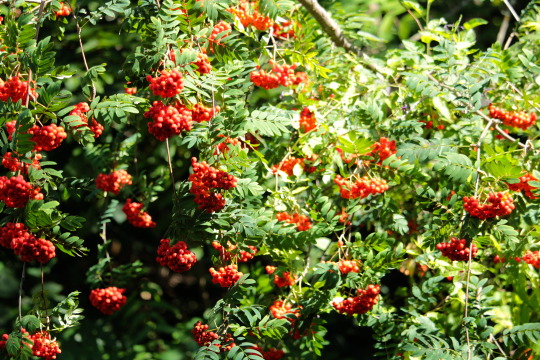
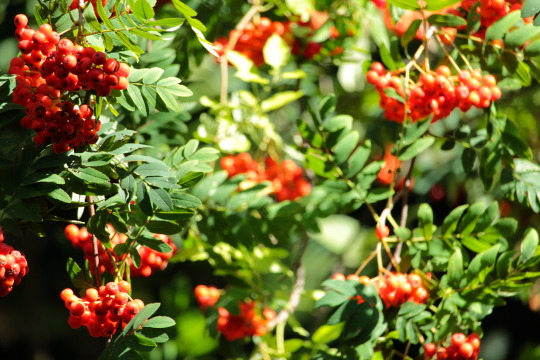
Rowan, Sorbus aucuparia.
#photography#canada#canon#nature#rowan#rowan berries#rowan berry#tree#plant#green witch#nature photography
6 notes
·
View notes